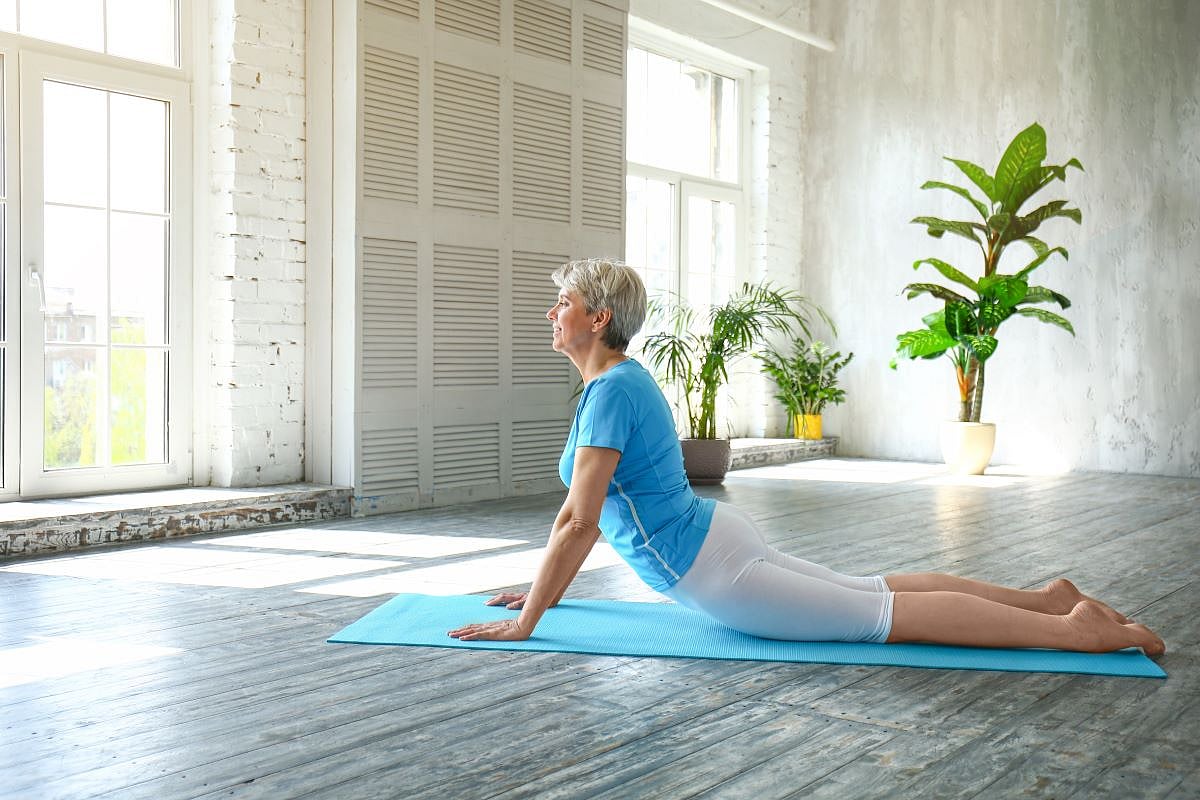Get Healthy!

- Ernie Mundell
- Posted September 20, 2024
Yoga, Other Exercise Can Curb Urinary Incontinence in Women
Millions of women struggle with the discomfort and stress of urinary incontinence, and many turn to medications for help.
Now, new research suggests that yoga and other exercise regimens might work just as well to control these bladder issues.
Researchers at Stanford University report that 12 weeks of yoga practice cut incontinence episodes among participants by an average of 65% -- about the equivalent of taking a drug.
“I would say that I think it’s a great idea to try it if you’re interested,” said study senior author Dr. Leslee Subak, chair of obstetrics and gynecology at Stanford Medicine. “It’s very low risk, and there’s potential for benefit, not only for incontinence but also for your general well-being.”
Her team published their findings recently in the Annals of Internal Medicine.
According to the researchers, half of middle-aged women, and up to 80% of women aged 80, experience urinary incontinence.
“It takes away independence,” Subak said in a university news release. “My patients will say, ‘I can’t stay with my kids or grandkids because I’m afraid I’ll wet the bed, and I can’t talk about it; it’s too embarrassing.’”
It can even prove dangerous.
“Incontinence and overactive bladder are among the biggest risk factors for falls and fractures among older women,” Subak noted. “You’re rushing to the bathroom at night -- with the lights off -- tripping and falling, and breaking a hip.”
But there are effective treatments, she said, and exercise could be one of them.
The new study involved 240 women with urinary incontinence, ages 45 to 90, with an average age of 62. About half were randomly assigned to 12 weeks of a hatha yoga program, while the other half had exercise classes focused on stretching and strengthening.
In the yoga program, women attended two 90-minute classes per week and learned 16 poses meant to strengthen the pelvic floor. The pelvic floor involves pelvic muscles that help keep the bladder and urethra in place.
In the exercise class, which took up an equivalent amount of time, workouts didn't specifically focus on the pelvic floor.
Participants recorded if and when they experienced an episode of incontinence, and whether it was stress incontinence (as can occur during a sneeze or cough) or urge incontinence, where to urge to "go" can be overwhelming.
Women engaged in both yoga and standard exercise saw big changes, the researchers reported.
At the study outset, the average participant was experiencing 3.4 episodes per day or urinary incontinence (1.9 urgency-type episodes and 1.4 stress-type episodes).
By the end of the 12 weeks, that had dropped to just 1.1 episodes per day for women in the yoga group, and 1.3 per day for folks doing standard exercise.
That's about a 60% drop in urinary incontinence episodes. Compare that to medications, whose effectiveness in easing symptoms ranges from 30% to 70%, according to Subak.
“I’m impressed that exercise did so well and impressed that yoga did so well,” she said. “One of the take-home messages from this study is ‘Be active!’”
She added that, “our study was testing the kind of yoga that just about anyone can do, with modifications for different physical abilities. What I love about it is that it’s safe, inexpensive, doesn’t require a doctor and accessible wherever you live.”
More information
Find out more about urinary incontinence at Johns Hopkins Medicine.
SOURCE: Stanford Medicine, news release, Sept. 6, 2024







